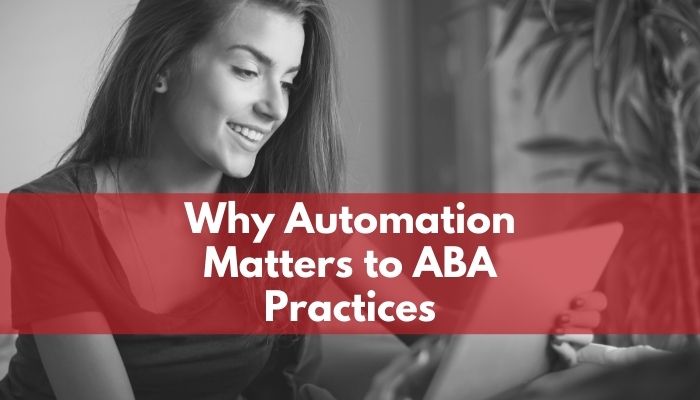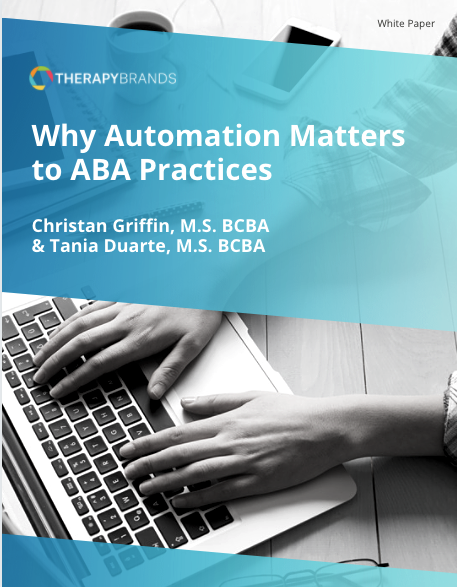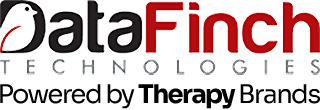
by Tania Duarte, M.S. BCBA
In the beginning, Applied Behavior Analysis (ABA) practitioners relied on paper as a means to collect data on both their clients and sometimes even their staff’s performance. However, utilizing paper data was–and still is–a very tedious and time-consuming task. It requires you to manually update your graphs and programs, print out tons of papers, coordinate the distribution of data sheets across a treatment team, and format graphs on Excel sheets. As you can imagine there are many frustrations that can come up with paper documentation. With DataFinch’s ABA data collection tools (Catalyst & Pinnacle) you can save time and energy previously spent on manual data collection and utilize that time to concentrate on client outcomes.
Catalyst: ABA Data Collection Tool Saves Therapists Time

How can Catalyst save ABA providers time? Catalyst assists practitioners with time-saving features such as automated graphing, curriculum libraries, auto mastery, and progress note generation (also known as Treatment Plan Updates). Additionally, when you use Catalyst, the data you collected within the session time is automatically synced to your insurance note. Using automated data collection tools over manual data entry allows you more time to observe your clients, conduct parent training, make treatment decisions, and supervise/train your client’s treatment team. Imagine the positive impact you could make on your client’s life with this extra time.
Catalyst Convenience
With Catalyst, you can say goodbye to Excel, paper, ink, printers, timers, clickers, and clipboards. Data collection is readily available; all from the convenience of your tablet or phone. What type of data can providers collect with Catalyst? You can track frequency with tally buttons on the bottom of the screen and track the duration of a behavior with the timer function. Additionally, the Catalyst software has built-in timers that allow users to collect rate, whole interval, partial interval, and momentary time sampling data.
Additional Catalyst Features
What else can providers do with Catalyst? With Catalyst’s data collection software, you can conduct task analyses, collect ABC data, and perform preference assessments. Additionally, you can record videos that sync from the app to the website for you to view later. You can also record audio for echoics data, take quantity data, conduct cold probes, and collect anecdotal data.
The Problem with Paper

Utilizing paper data collection requires you to create your own datasheets, manually update them, print them out and distribute them to your client’s team. Following this, the therapist collecting data would then need to return the completed data sheets, and then you would have to complete the tedious task of calculating percentages to manually enter each data point into an Excel sheet. Then, the Excel sheet would need to be formatted to properly graph each data point, the phase change lines, and dates.
Pursue Paperless ABA Data Collection
Go paperless with Catalyst and save yourself time for what really matters.
Disadvantages of Paper Data
- Shuffling of papers
- Misplacing pens
- Clanking of clickers
- Bulky clipboards and binders
- Manual graphing
- Formatting Excel workbooks and graphs
- Manually inputting data into insurance notes
- Printers running out of ink (not to mention the cost!)
The Catalyst Advantage
- Automated graphing and progress reports
- Save time programing with curriculum libraries for targets
- Data syncing directly to insurance notes
- Documents readily accessible on the go
- No need to carry papers, pens, clickers, or timers
- A wide variety of data collection options
- Auto-advance through targets as client progresses
- Customizable graphs
ABA Supervision

With your client data collection automated your practice now has more time to train and supervise your staff to help them grow professionally and stay motivated in a field with a high burnout rate.
For this reason, quality supervision includes positive as well as corrective feedback. You want the therapist to know “this is what you’re doing well” and “what I want to see more of” or “this is what you’re struggling with and I would like you to improve on.” For example, imagine you have a client that is an early learner, and part of their treatment plan is immediate reinforcement after each desired target. Let’s say the therapist is not reinforcing the client immediately after they perform a skill you’re targeting. However, they are still prompting the client correctly. As the Behavior Analyst, you might tell the therapist: “You are doing an awesome job utilizing the prompting hierarchy, let’s make sure we reinforce all of the learner’s correct responses as soon as possible so we keep their momentum.”
Staff Performance
As a BCBA, you often find yourself reflecting on your client’s progress. Are their maladaptive behaviors decreasing? How are they progressing with their skills? What can I do to improve their outcomes? In addition to utilizing the time-saving features in Catalyst for session data collection, you can help improve your client’s outcomes by taking advantage of the staff performance tracking tools in Pinnacle.
With Pinnacle, you can score staff performance with a variety of data measurements such as yes/no checklists and Likert rating scales. You can then view the therapist’s progress on their specific skills and provide constructive (and documented) feedback. You can also track the progress of BACB ® task list items to ensure your performer’s preparedness for the RBT , BCaBA , BCBA , or BCBA-D certification exams. With Pinnacle you can keep your supervision sessions organized and well-documented while keeping the data centralized.
Supervision Documentation is Vital
Why should I track my staff’s performance? Staff performance within their therapy session impacts their client outcomes. If you track their performance on different skills you are able to make data-driven decisions on what feedback to provide and how different training tactics may impact that individual’s performance. Some people learn best with written feedback, others auditory, and some may learn best by watching others perform the task. While many education researchers recommend a combination of responses geared towards all three learning types, sometimes it is not feasible to do that for every single piece of supervisory feedback. Documenting your supervisory feedback within an automated tool allows for all feedback to be in a central storage system for RBTs and other providers to learn from.
Why Pinnacle?
Pinnacle assists you in nurturing your employees’ development and improving performance through pinpointed goals and data-based feedback. With Pinnacle your practice can facilitate an optimal supervision experience through the use of data-driven training decisions. Additionally, the software promotes professional growth with a consistent feedback system for your staff from every supervision session.
Benefits of Pinnacle
- You can observe performers in one-on-one or group supervision sessions and meetings.
- Easily toggle between forms to collect data on multiple performers.
- Designate independent versus group supervision hours to ensure less than half of the supervised time was in group settings.
- Designate the experience type
- Track qualifications for those accruing hours towards supervision.
- Track restricted vs. non-restricted activities.
- Track the method of supervision (e.g., remote or in-person).
Learn more about Pinnacle and try it free for 14 days or schedule a demo to see the software in action.
Final Thoughts
At the end of the day client outcomes are what matter most. ABA practices and therapists are talented professionals who make a difference in the world. Their software and tools should make their jobs easier, cutting down on administrative time so that they can spend their time where it matters most: with clients.
Free ABA Automation White Paper
Would you like to learn more about how automation is vital to ABA practices? Download our free white paper below.


Tania Duarte, M.S. BCBA
Tania Duarte received her M.S. in Applied Behavior Analysis from Florida State University. She has over ten years of clinical experience working with individuals with disabilities in various settings, including schools, homes, clinics, and community settings. Additionally, she has worked with DataFinch's Customer Experience Team, assisting ABA practitioners with their data collection software needs. Tania currently serves as the eLearning M.A. Program Coordinator at ABA Technologies and works with students pursuing their masters in ABA at the Florida Institute of Technology.
References
- ABA Data Collection software: Catalyst by DataFinch. (n.d.). Retrieved September 01, 2021, from https://datafinch.com/aba-data-collection/
- Duarte, T. (2021). Mentorship for aba therapists. Retrieved September 01, 2021, from https://datafinch.com/aba-therapy-mentorship/
- Duarte, T. (2021). RBT Supervision Hours. Retrieved September 01, 2021, from https://datafinch.com/aba-supervision/
- Pinnacle OBM Data Collection. (n.d.). Retrieved September 01, 2021, from https://datafinch.com/obm-supervision/
This post is for informational purposes only and is not meant to be used in lieu of practitioners’ own due diligence, state and federal regulations, and funders’ policies.

